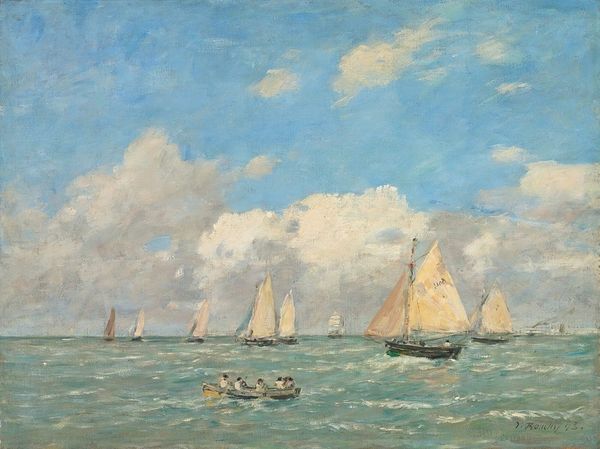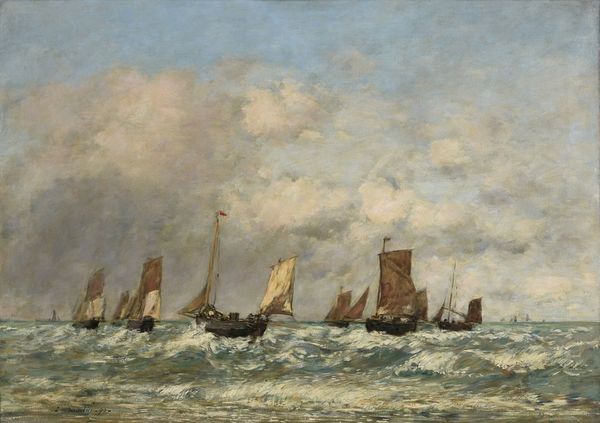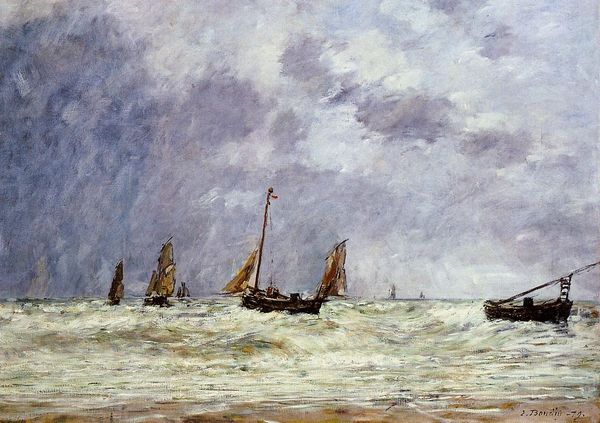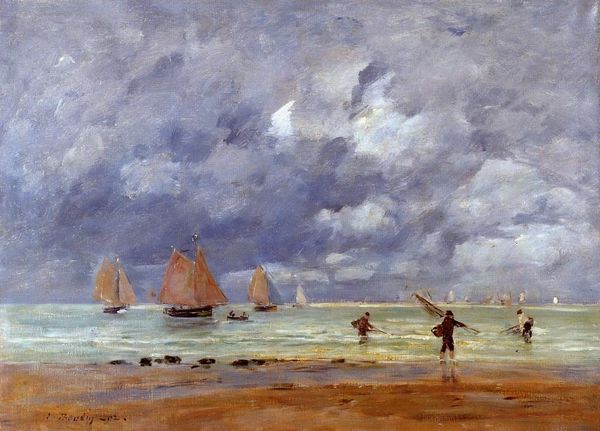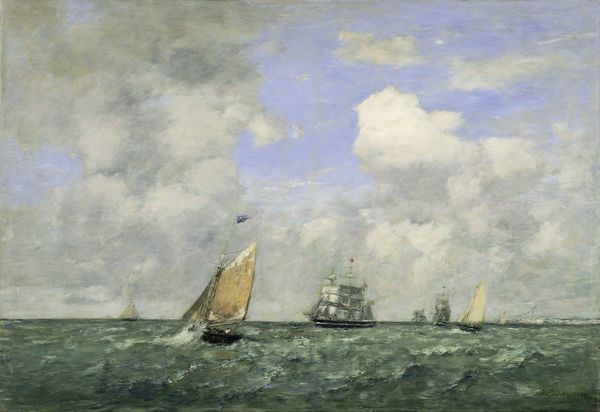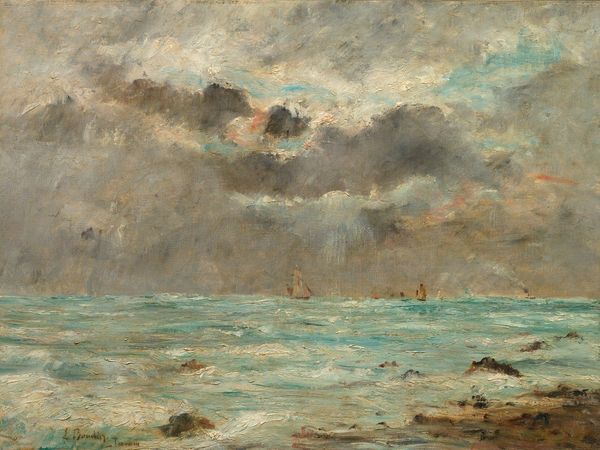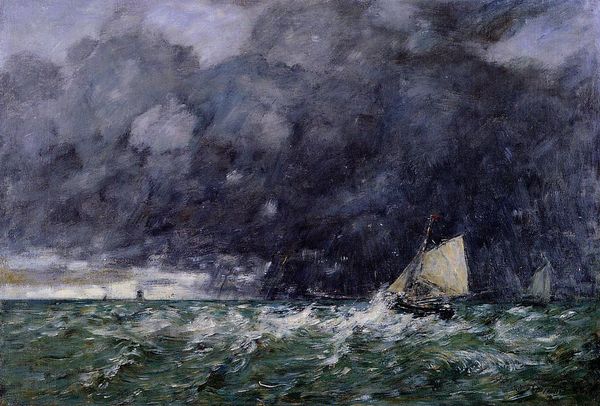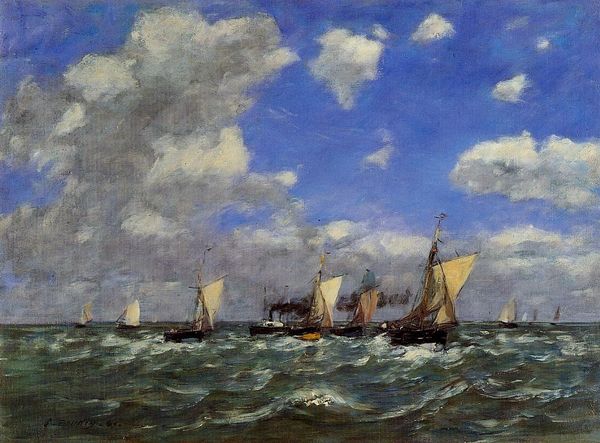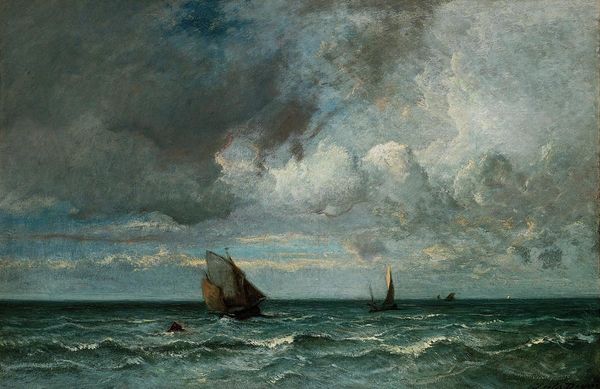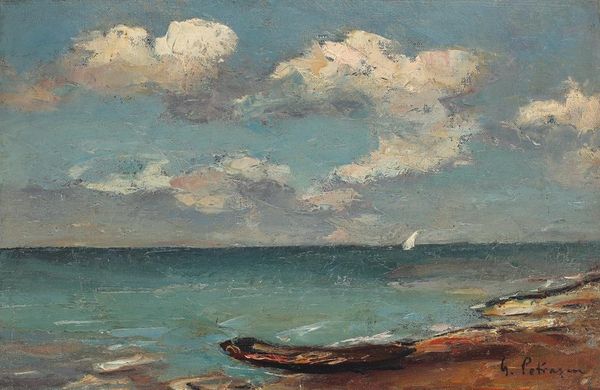
painting, plein-air, oil-paint
#
painting
#
impressionism
#
plein-air
#
oil-paint
#
landscape
#
impressionist landscape
#
oil painting
#
cityscape
#
post-impressionism
#
realism
Copyright: Public Domain: Artvee
Curator: Let's delve into Eugène Boudin's "Sailboats near Trouville," dating from around 1885 to 1890. It's an oil painting, embodying the spirit of plein-air and impressionist techniques, and really focuses on working conditions of making art, moving out of studio and toward working *en plein air.* Editor: Whoa, the immediate feeling is drama, wouldn't you say? Those billowing clouds – you can almost feel the wind whipping across the canvas. There's such energy! Curator: Absolutely. The application of paint and visible brushwork point to Boudin's attempt to capture the immediacy of the scene, and the rise of ready-mixed paint in tubes really allowed artists like Boudin to directly engage with depicting fleeting effects of light on the Channel coast. Notice, the materiality isn’t obscured; rather, it highlights labor through traces. Editor: I get the feeling these aren't fancy yachts. These seem like working boats, battling the elements. Curator: Precisely. Boudin, influenced by Courbet's realism, sought to depict everyday life. Trouville, a bustling port, was undergoing changes as it transitioned to become a resort for tourism, this tension in a city being rebuilt into a site of consumption also interests Boudin in many paintings like this one. It also highlights new patterns of consumption brought to Trouville's docks as new consumers come in contact with laborers on the sea and land. The social implications there. Editor: I almost imagine standing on that beach, smelling the salty air, feeling the sand beneath my feet. But, like you said, he’s very aware of who really does the work around that salty air. He depicts the scene but seems equally focused on working-class and tourist labor conditions, wouldn’t you agree? Curator: Yes, I agree. And the painting challenges this neat divide. It speaks volumes about maritime labor alongside recreational leisure within its frame, really making me contemplate Trouville's transition within labor divisions. Editor: Well, for me, it feels like an invitation into a specific moment. I almost shiver just looking at those greys, the cool hues so evocative. I guess, overall, I am happy for my glimpse into Trouville here! Curator: It is really nice for him to show these juxtapositions within working labor systems while we observe today. Thank you, that's really beautiful.
Comments
No comments
Be the first to comment and join the conversation on the ultimate creative platform.
